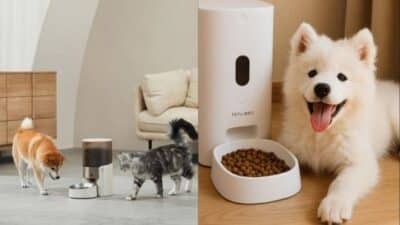Character design serves as the foundation for bringing fictional personalities to life, whether you’re creating characters for animation, games, comics, or illustration. The process involves balancing artistic skill with storytelling principles to craft visually compelling figures that resonate with audiences.
Mastering character design requires understanding how visual elements like shape, color, and posture work together to communicate personality and emotion effectively. This comprehensive guide will walk you through essential techniques for developing your character’s core identity, using design principles to convey their nature, and creating memorable silhouettes that stand out from the crowd. You’ll discover how thoughtful choices in facial features, accessories, and body language can transform a simple sketch into a character that feels alive and engaging.
1) Understand your character’s essence and backstory
Your character’s backstory forms the foundation of compelling design. It provides the framework for understanding their motivations, actions, and relationships with others.
Start by asking yourself key questions about your character. What experiences shaped them? What are their fears, dreams, and core values?
A well-crafted backstory helps you make informed design choices. Your character’s history influences how they carry themselves, their clothing style, and even their facial expressions.
Think about their personality traits and how these might translate visually. A cautious character might have guarded body language, while an optimistic one could have more open gestures.
Consider their role in your story or artwork. Are they a hero, villain, or supporting character? Their purpose should guide your design decisions.
Your character’s background also affects their relationships with others. Understanding these connections helps create more authentic interactions and expressions.
Don’t overcomplicate their history. Focus on the most important events and traits that directly impact their appearance and behavior.
Remember that backstory doesn’t need to be visible to your audience. It serves as your personal guide for creating consistent, believable character designs that feel genuine and relatable.
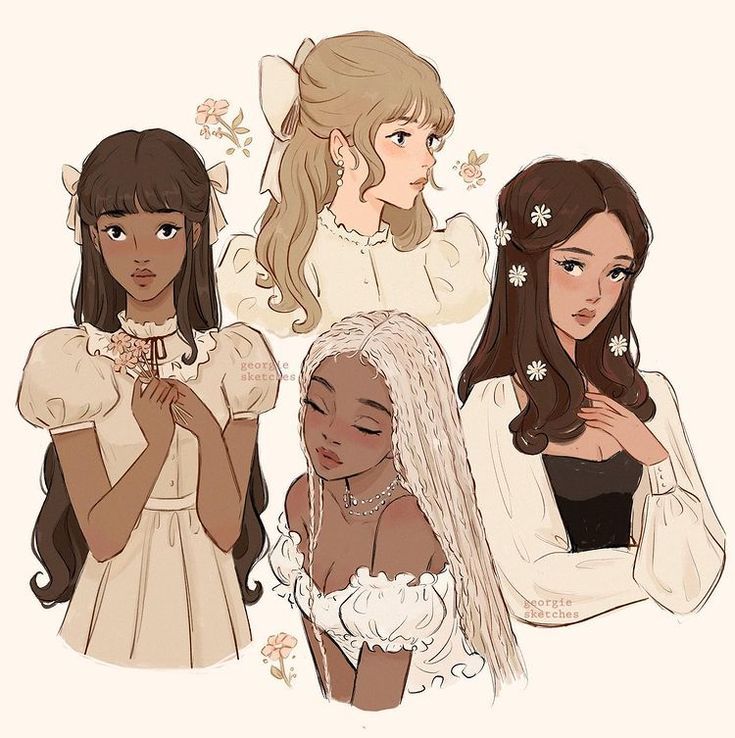
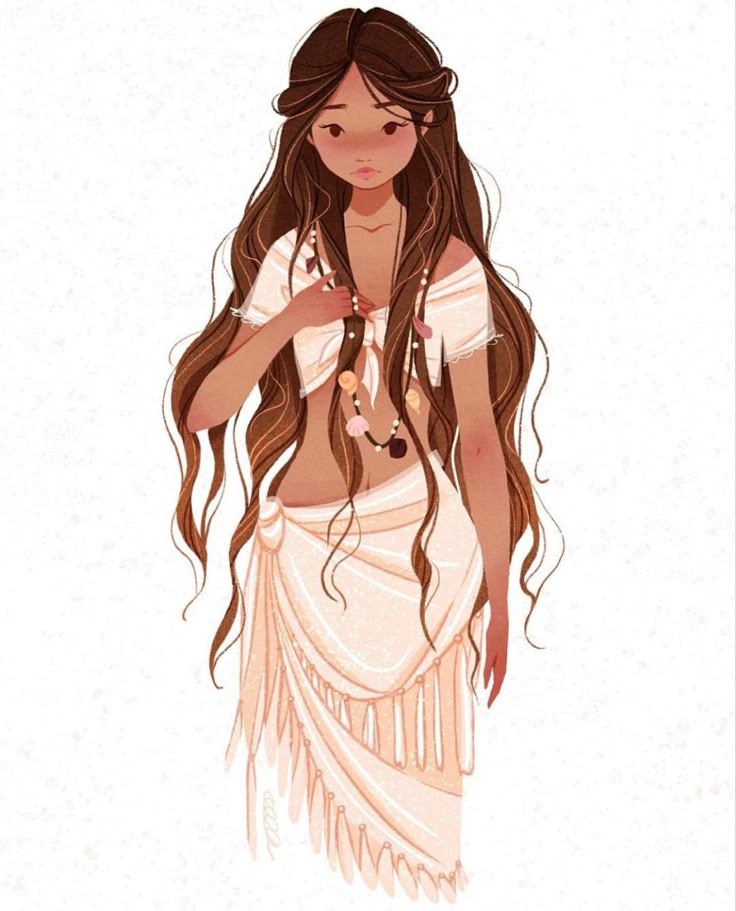
2) Use shape language to convey personality
Shape language uses basic geometric forms to communicate your character’s personality instantly. Circles, squares, and triangles each carry distinct psychological associations that viewers recognize subconsciously.
Circular shapes suggest friendliness, approachability, and softness. Characters with round faces, curved bodies, or circular clothing elements feel welcoming and harmless. Think of gentle heroes or comic relief characters.
Square shapes convey stability, strength, and reliability. Angular jawlines, broad shoulders, and rectangular proportions make characters appear trustworthy and dependable. These shapes work well for steadfast allies or protective figures.
Triangular shapes communicate danger, aggression, or sharpness. Pointed features, sharp clothing, and angular silhouettes create tension and suggest threat. Villains often incorporate these jagged elements.
You can apply shape language to every design element. Consider your character’s overall silhouette, facial features, clothing, and accessories. Even subtle details like scars or decorative elements should support the chosen personality.
Mix shapes thoughtfully to create complex personalities. A character might have a round face but sharp clothing, suggesting hidden danger beneath a friendly exterior.
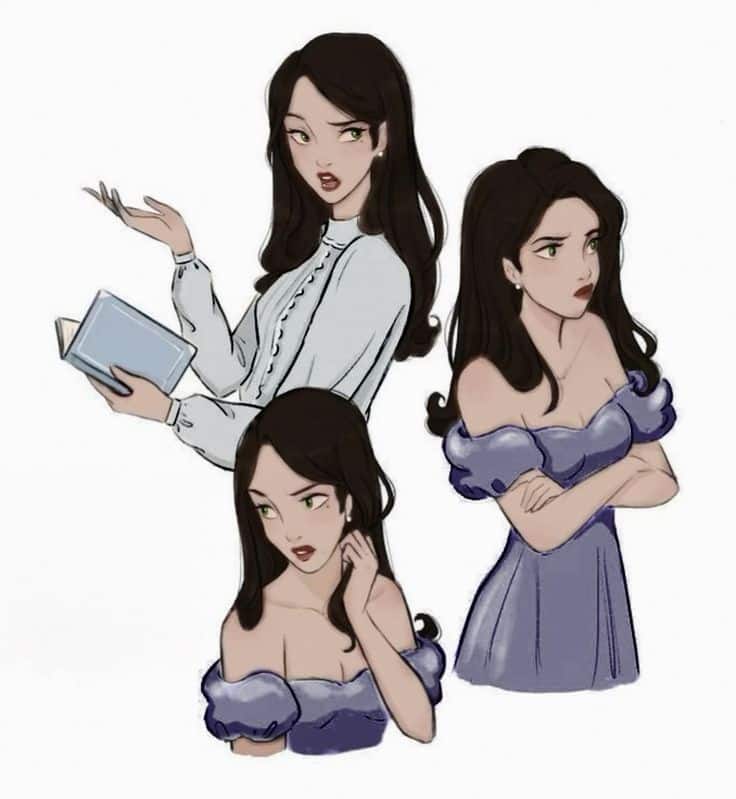
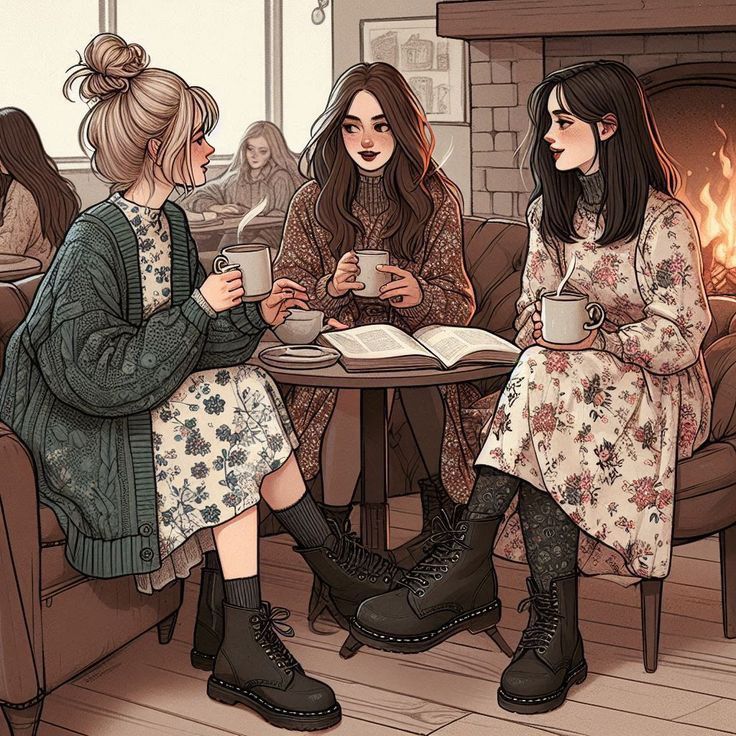
3) Apply color psychology to enhance mood
Color psychology helps you create emotional connections between characters and viewers. Each color carries specific psychological associations that influence how people perceive your character’s personality.
Red conveys passion, aggression, or energy in character design. Use it for bold protagonists or intense villains. Blue represents calmness, trustworthiness, and stability, making it perfect for reliable mentor figures.
Green often suggests nature, growth, or jealousy depending on the shade. Yellow brings feelings of happiness and optimism but can also indicate caution or cowardice.
Purple communicates mystery, magic, or royalty. It works well for mystical characters or those with noble backgrounds. Orange combines red’s energy with yellow’s warmth, creating friendly and enthusiastic personalities.
Consider your character’s role in the story when selecting colors. A gentle healer might use soft blues and greens, while a fierce warrior could feature bold reds and oranges.
Cultural context matters too. Colors carry different meanings across cultures, so research your target audience’s color associations.
Test your color choices by asking others what emotions or traits they see in your character. This feedback helps ensure your color psychology achieves the intended mood and personality impression.
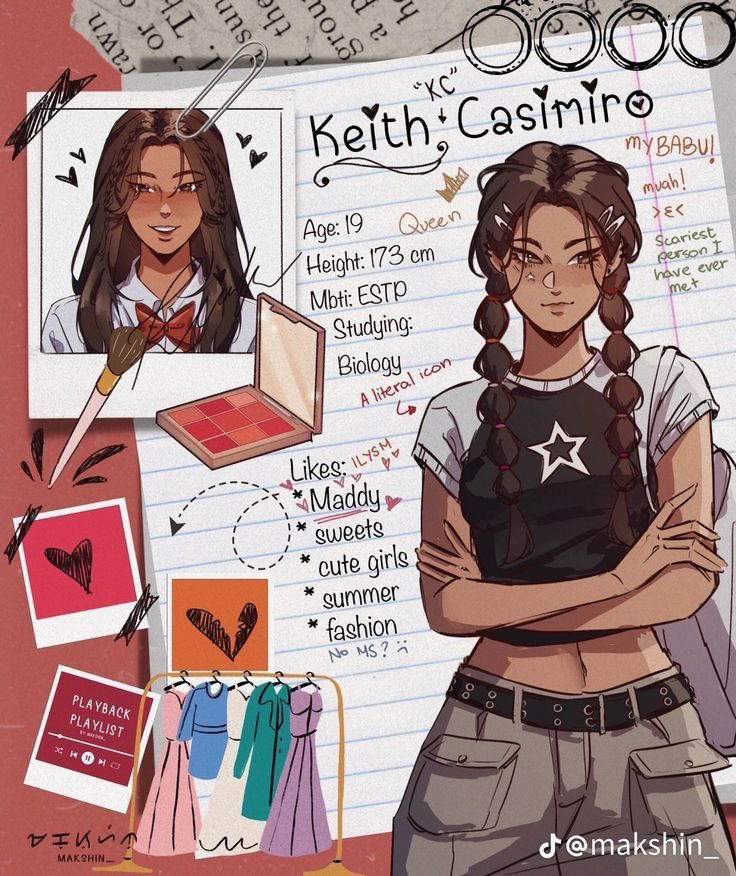
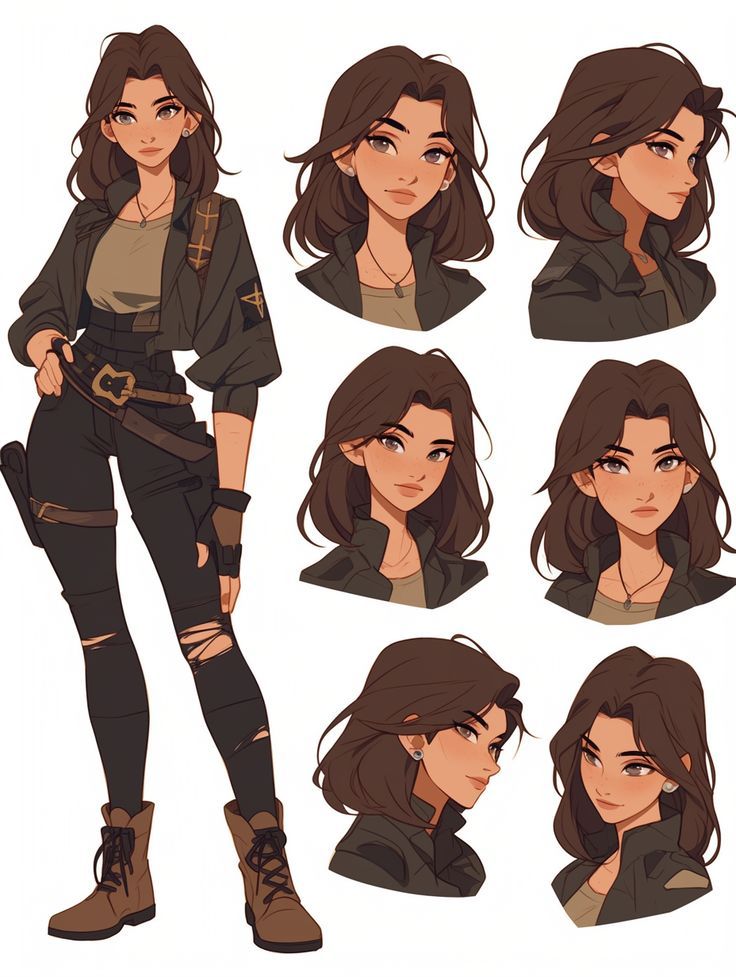
4) Focus on expressive facial features
Your character’s face tells the story before they even speak. Expressive facial features create an instant emotional connection with your audience.
Start by experimenting with different eye shapes. Large, round eyes often convey innocence or surprise, while narrow eyes can suggest cunning or focus.
The mouth carries tremendous emotional weight. A slight upturn creates warmth and approachability. Downturned lips suggest sadness or disapproval.
Don’t overlook the power of eyebrows. Raised brows show surprise or curiosity. Furrowed brows indicate concentration or anger. These simple changes transform your character‘s entire mood.
Consider the nose shape carefully. A small button nose feels youthful and friendly. A larger, angular nose can add maturity or authority to your design.
Design your character’s face to handle a full range of emotions. Flexible features allow you to show happiness, anger, fear, and excitement convincingly.
Pay attention to facial anatomy basics. Understanding how facial muscles work together helps you create believable expressions that feel natural.
Remember that subtle details matter most. The slight tilt of an eyebrow or the curve of a smile can completely change how viewers perceive your character’s personality.
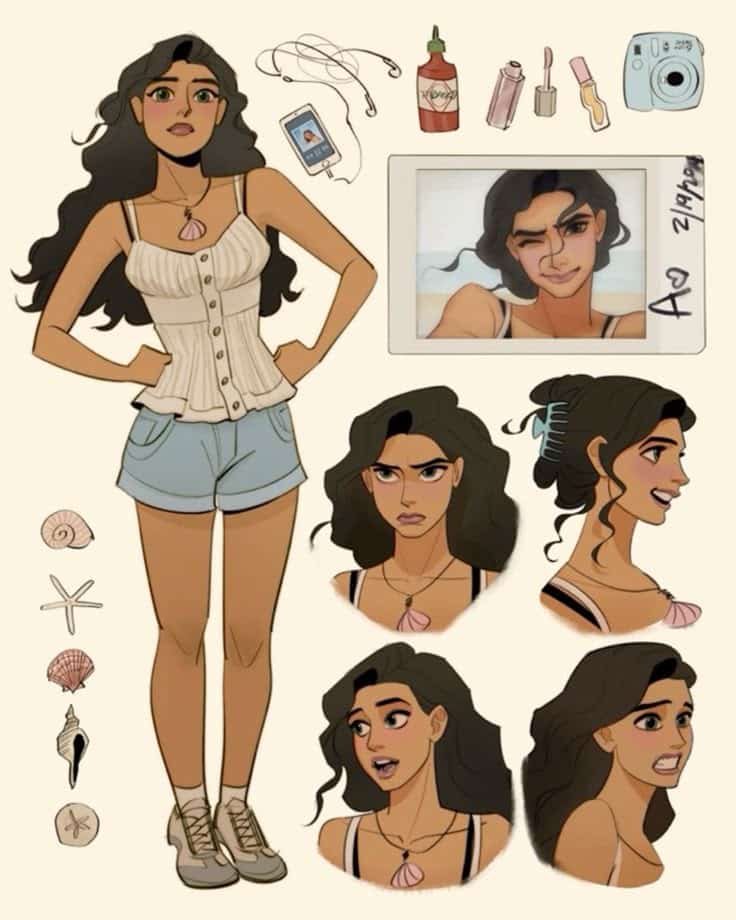
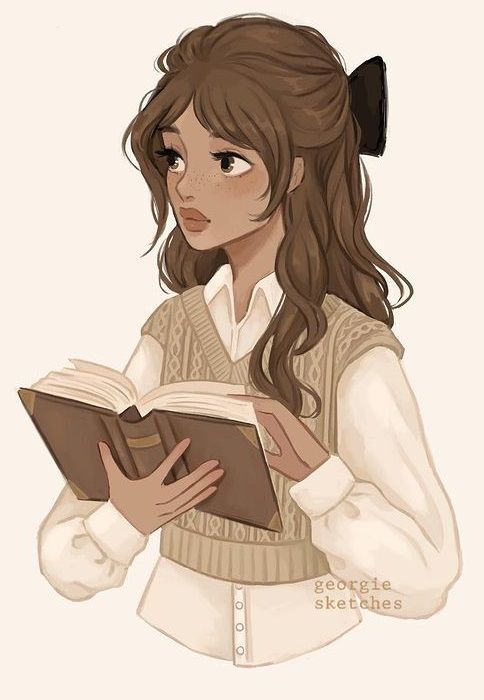
5) Design silhouettes that are instantly recognizable
Your character’s silhouette is the foundation of memorable design. A strong silhouette ensures your character stands out even when viewed from a distance or at small sizes.
Start with simple geometric shapes to build your character’s basic form. The human mind processes these shapes quickly, making recognition nearly instant.
Focus on large, contrasting shapes first. Avoid adding too many details initially, as they can muddy the overall silhouette and reduce impact.
Use distinctive proportions to make your character unique. Exaggerated features like oversized heads, broad shoulders, or elongated limbs create memorable shapes.
Consider negative space as part of your design. Cutouts in clothing, gaps in armor, or spaces between elements add visual interest and improve recognition.
Test your silhouette from multiple angles. Your character should remain recognizable from the front, side, and back views at minimum.
Mix different sized shapes for visual balance. Combine large, medium, and small elements to create a harmonious composition that feels natural.
Remember that players and viewers can identify well-designed silhouettes in under half a second. This quick recognition helps your character make an immediate impression.
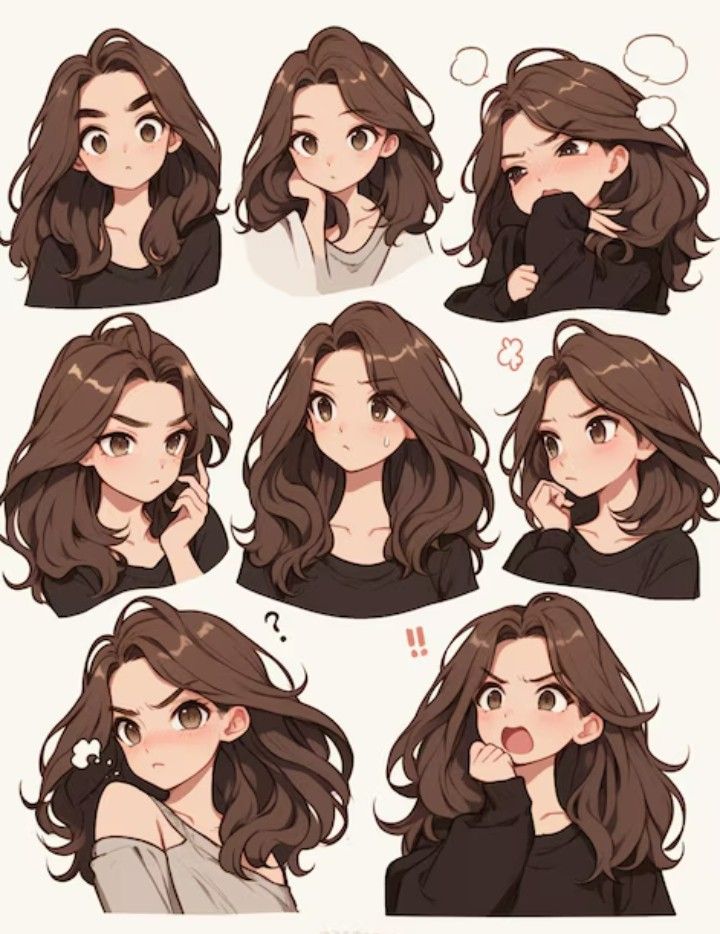
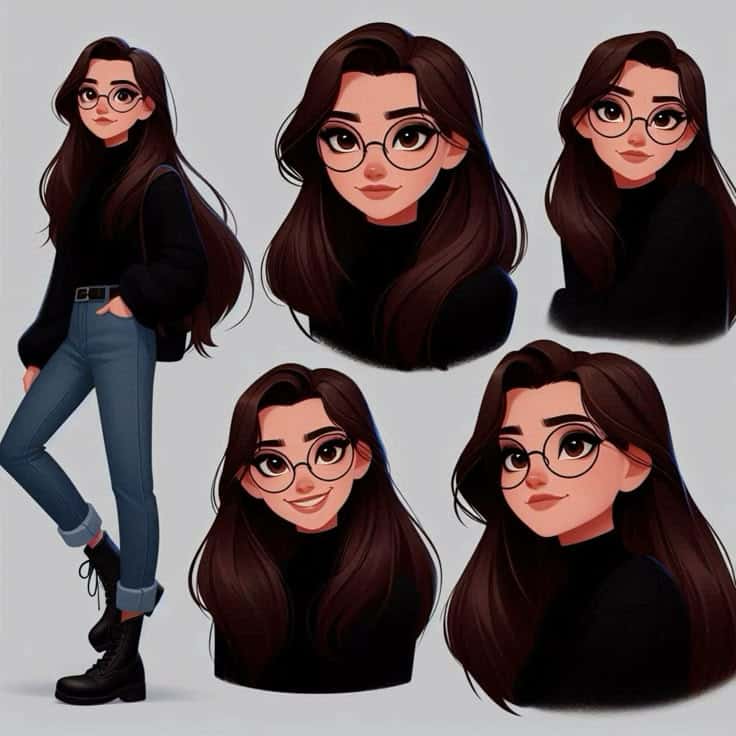
6) Incorporate unique accessories or traits
Accessories are powerful tools that instantly communicate your character’s personality and backstory. A worn leather journal suggests a thoughtful writer, while oversized goggles hint at an inventor’s curious nature.
Think beyond typical items like hats or jewelry. Consider unusual props that reflect your character’s world and interests. A botanist might carry seed pouches, while a street performer could have colorful juggling balls attached to their belt.
Physical traits work similarly to accessories in defining character identity. Scars tell stories of past adventures. Unusual eye colors or distinctive birthmarks make characters memorable and recognizable.
The key is choosing accessories that serve multiple purposes in your design. They should enhance the visual appeal while revealing character traits without requiring explanation.
Cultural elements can add authenticity and depth to accessory choices. Research traditional clothing, symbols, and objects from different cultures to create meaningful design elements that resonate with viewers.
Remember that less can be more effective than overwhelming your character with too many details. Focus on one or two standout accessories that truly capture your character’s essence and make them unforgettable.

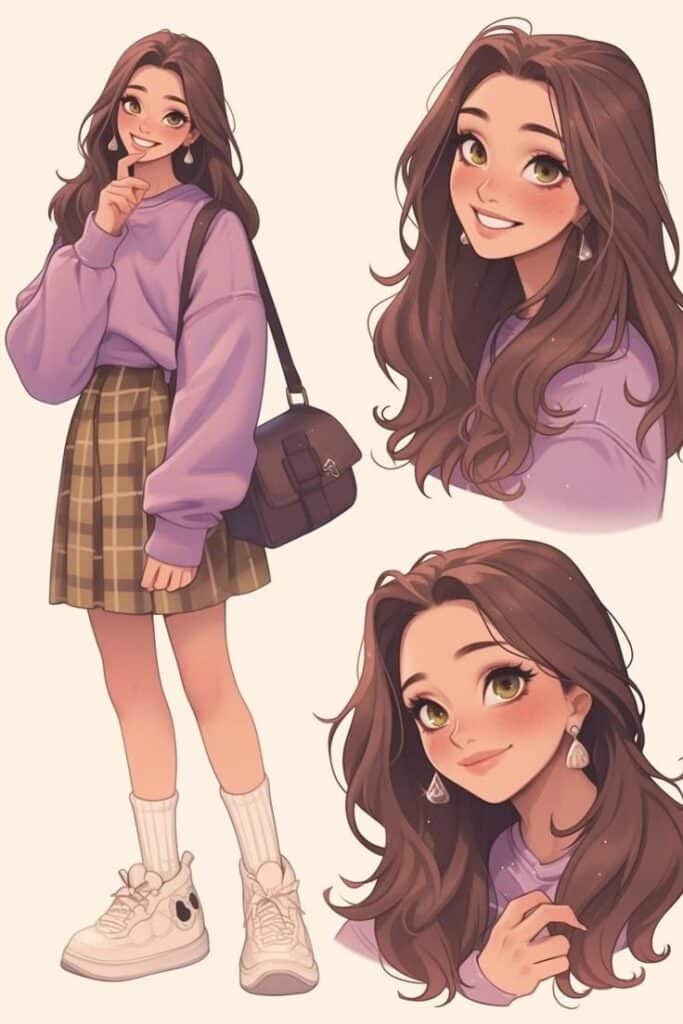
7) Experiment with body language and posture
Your character’s posture speaks before they say a word. Body language carries more emotional weight than facial expressions alone.
Confident characters stand tall with wide stances. Their shoulders remain back and their chests open. Reserved personalities often display closed-off postures with hunched shoulders.
Practice drawing poses without focusing on specific character designs first. This prevents the character’s appearance from limiting your pose options.
Study how real people express emotions through movement. Watch how anger changes shoulder position or how sadness affects spine alignment.
Test different gestures for the same emotion. A nervous character might fidget with their hands, shift their weight, or cross their arms defensively.
Consider how your character’s background influences their posture. A former soldier might maintain rigid posture while an artist could have more relaxed positioning.
Experiment with contrast in your poses. Place confident and timid characters together to highlight their personality differences through body language.
Remember that posture reveals attitude and confidence levels instantly. Use this visual shorthand to communicate personality traits effectively to your audience.
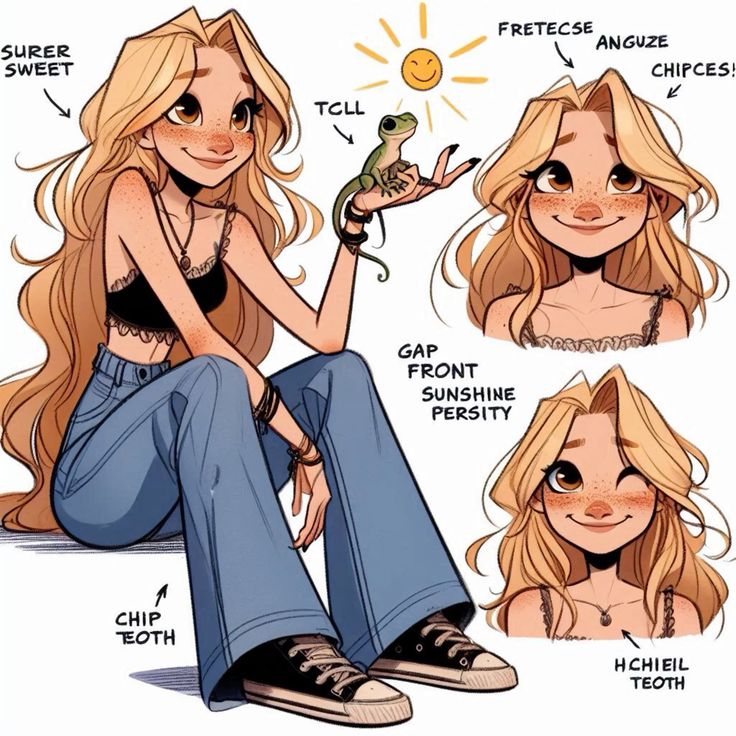
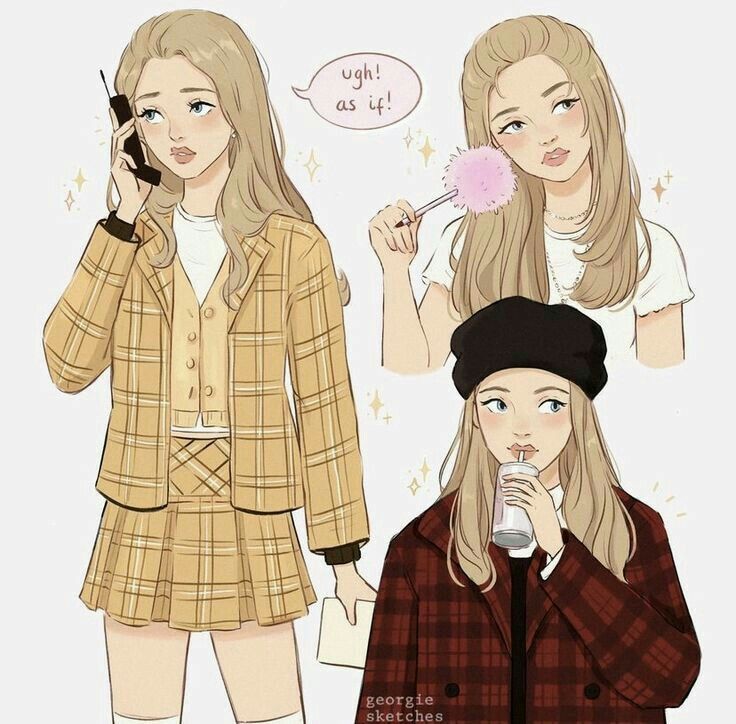
8) Keep designs simple yet memorable
Simple character designs often create the strongest impact. You don’t need complex details or elaborate features to make your characters stand out.
Focus on one or two distinctive elements that make your character unique. This could be an unusual hairstyle, specific clothing item, or memorable facial feature.
Clean, streamlined designs are easier for viewers to remember and recognize. When people can quickly sketch your character from memory, you’ve achieved good simplicity.
Avoid cluttering your design with unnecessary accessories or overly detailed textures. Each element should serve a purpose in defining your character’s personality or story role.
Strong silhouettes help with memorability. Your character should be recognizable even as a solid black shape against a white background.
Use bold, contrasting colors sparingly rather than a rainbow of hues. A limited color palette makes your design more cohesive and easier to reproduce consistently.
Consider iconic characters from popular media. Most memorable designs rely on simple shapes and clear visual elements rather than intricate details.
Test your design by showing it to others briefly, then asking them to describe it later. If they remember the key features, your simplicity is working effectively.
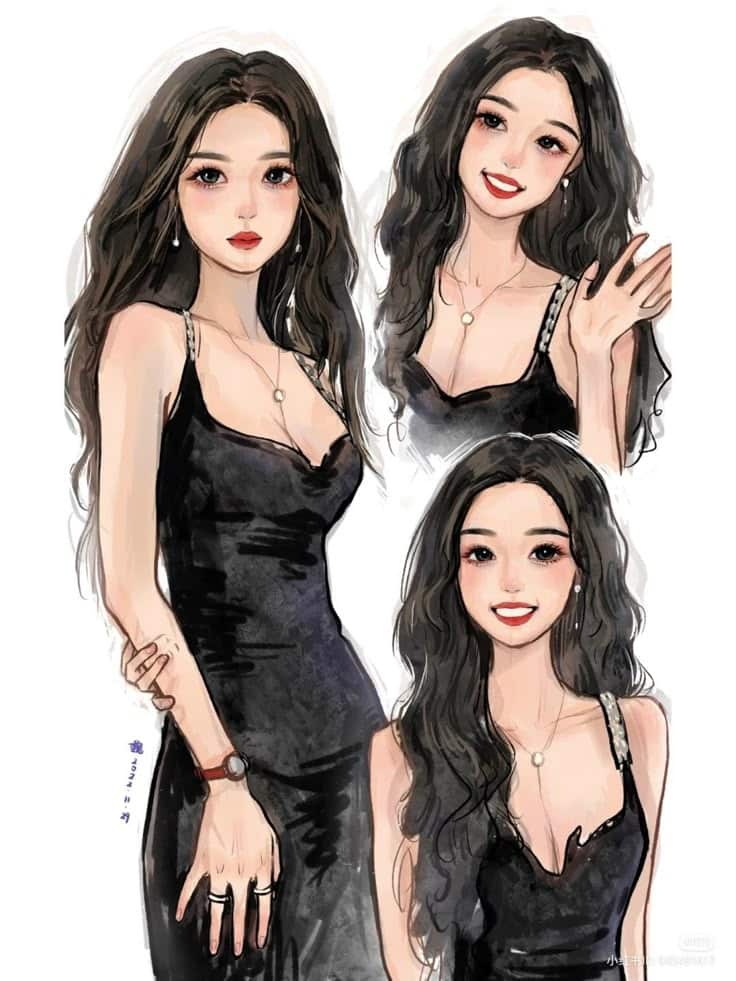
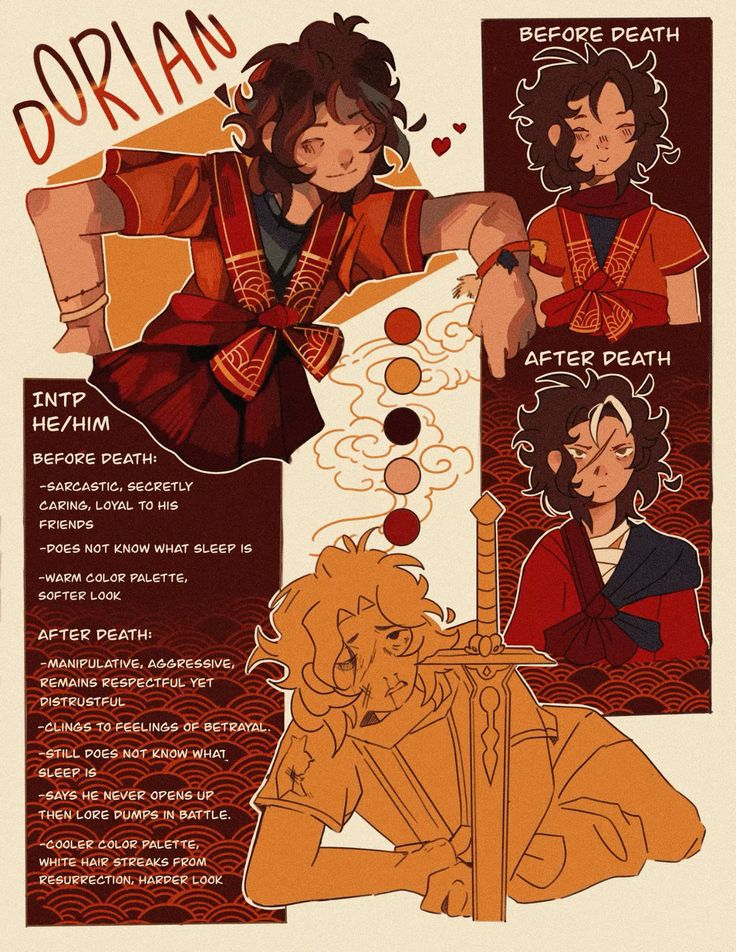
Applying Character Design Principles
Successful character design requires translating theoretical principles into practical visual choices that communicate personality and story elements. Avoiding common design pitfalls ensures your characters remain memorable and effective across different mediums.
Visual Storytelling in Character Design
Your character’s appearance should instantly communicate their role, personality, and background without requiring explanation. Shape language forms the foundation of this communication.
Round, soft shapes suggest friendliness and approachability. Angular, sharp forms convey danger or aggression. Rectangular shapes imply stability and reliability.
Color psychology reinforces character traits through emotional associations. Warm colors like red and orange create energy and passion. Cool blues and greens suggest calmness or mystery.
Your character’s silhouette must read clearly even in complete darkness. A distinctive outline ensures instant recognition and visual impact.
Proportions tell stories about character roles. Heroic figures often feature broader shoulders and confident postures. Villains might have exaggerated features that create visual tension.
Costume and accessory choices reveal character history and occupation. A worn leather jacket suggests different experiences than pristine formal wear. Each design element should serve the character’s narrative purpose.
Common Mistakes to Avoid
Over-designing creates visual chaos that confuses viewers. Limit yourself to three primary colors and avoid excessive detail that clutters the design.
Ignoring the target audience leads to inappropriate design choices. Children’s characters require different approaches than mature audience designs.
Copying existing characters without adding original elements results in forgettable designs. Study references but create unique combinations and interpretations.
Neglecting different angles and expressions weakens character consistency. Your design must work from multiple viewpoints and emotional states.
Forgetting the medium causes practical problems. Animation requires simpler designs than static illustrations. Game characters need different considerations than comic book figures.
Inconsistent proportions across different poses break character believability and create production difficulties.
Enhancing Appeal and Personality
Character expressions and poses communicate emotions instantly while color choices trigger specific psychological responses. These visual elements work together to create memorable characters that connect with your audience.
Exploring Expressions and Poses
Your character’s facial expressions serve as the primary window into their emotional state. Focus on the eyes, eyebrows, and mouth positioning to convey specific feelings effectively.
Key expression elements:
- Eyes: Wide eyes show surprise or fear, narrowed eyes indicate suspicion or anger
- Eyebrows: Raised conveys shock, furrowed shows concentration or worry
- Mouth: Upturned creates happiness, downturned suggests sadness or disapproval
Body language amplifies your character’s personality through posture and gesture. A confident character stands tall with shoulders back, while a shy character might hunch forward or cross their arms defensively.
Practice drawing your character in different emotional states. Sketch them angry, excited, confused, and determined to build a library of expressions that match their personality traits.
Color Choices for Emotional Impact
Colors trigger immediate psychological responses that shape how viewers perceive your character. Warm colors like red and orange suggest energy and passion, while cool blues and greens convey calmness or mystery.
Color psychology basics:
- Red: Passion, anger, power, danger
- Blue: Trust, stability, sadness, cold
- Yellow: Joy, optimism, caution, energy
- Green: Nature, growth, envy, sickness
- Purple: Royalty, mystery, creativity, luxury
Consider your character’s role when selecting their color palette. Heroes often wear bright, saturated colors that inspire confidence, while villains might use darker tones or harsh color contrasts.
Test different color combinations on your character design. The same character can feel completely different when rendered in warm earth tones versus cool metallic shades.
- 0shares
- Facebook0
- Pinterest0
- Twitter0

